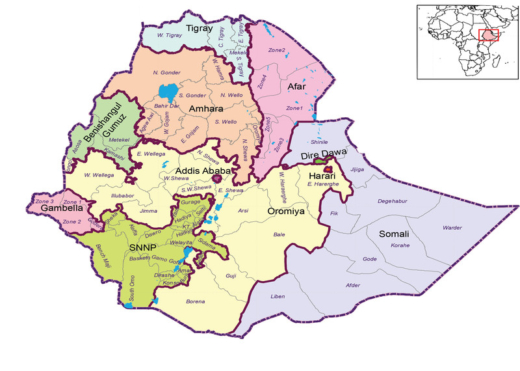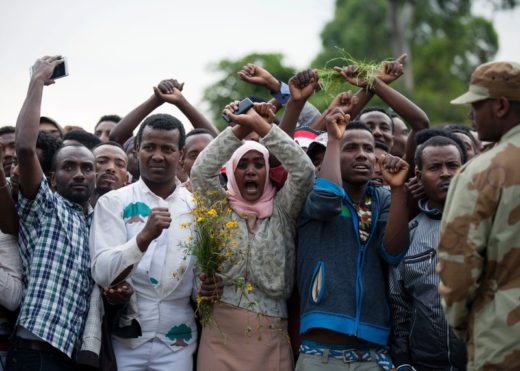The Ethiopian government declared a state of emergency on 9 October 2016. Protests in Oromia, which later spread to Amhara and other regions, had been ongoing since November 2015.
The protests in the Oromia Region in November 2015 were initially against the government’s Addis Ababa ‘Master Plan’, which would have extended the capital, Addis Ababa, into Oromia Regional State. Protesters were concerned that the Master Plan would lead to evictions of Oromo farmers living in the outskirts of the capital.
Following the protests, in January 2016, the government announced that it was cancelling the Master Plan. However, the protesters’ demands had by then evolved to include the release of prisoners arrested simply for exercising their rights to freedom of expression, a demand for administrative autonomy of the Oromia Region, as well as political and economic justice. The protests in Oromia continued up until October 2016. In August 2016 protests began in the Amhara Region as well, sparked by the Wolkait Committee leaders’ detention. The committee was advocating for the self-determination of those living within the Wolkait district, a disputed area between the Tigray and Amhara ethnic groups.
The State of Emergency Declaration will deepen, not mitigate, the grievances that triggered the protests in the first place.
Muthoni Wanyeki, Amnesty International's Regional Director for East Africa, the Horn and the Great Lakes

Crackdown on human rights
Tensions in Oromia and the Amhara Region escalated following a stampede on 2 October 2016 during the Irrecha holiday, an Oromo annual Thanksgiving festival. The stampede resulted in the death of at least 55 people. Immediately thereafter, Oromo activists declared a “week of rage”, and fresh protests broke out in a number of locations in Oromia. Some protests became violent as protesters attacked foreign and local businesses, farms and vehicles, especially those near Addis Ababa.
In response, the Ethiopian government declared a state of emergency on 9 October 2016 and established a special unit, the Command Post, to implement ‘rehabilitation measures’ against people arrested for participating in violence or unrest in the past year. This State of Emergency Declaration contains sweeping restrictions on a broad range of human rights in that it affects rights that must not be suspended-even in a state of emergency. The Declaration allows for retroactive application of criminal law, as well as violates rights to fair trial and to be free from torture and ill treatment.
Government security forces arrested tens of thousands of people in the Amhara region, Oromia, and the Southern Nations, Nationalities and Peoples’ Region (SNNPR). This includes many political activists, members of the Human Rights Council (the only independent human rights monitoring civil society operating in Ethiopia), protesters and journalists.

Crackdown on human rights must stop
This timeline highlights chronologically some of the major human rights violations committed under the State of Emergency Declaration. Arbitrary detention and torture against peaceful protesters and activists must stop here and now.
Take action. Please help promote this message on Twitter and Facebook.
Take action today

Take action now
ETHIOPIA: DRACONIAN STATE OF EMERGENCY MEASURES
An analysis of the State of Emergency

